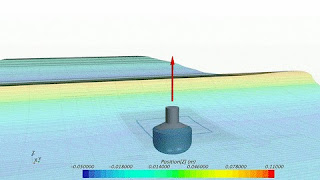Green Energy / Renewable Energy from Wave Power
Wave power is free, reliable, sustainable, renewable, and produces zero greenhouse gases and helps to reduce our carbon footprint.
Wave energy (or wave power), also called ocean wave energy, is the electrical power produced by harnessing the up and down motion of floating devices placed on the surface of the ocean. Ocean wave energy is typically produced by floating turbine platforms or buoys that rise and fall with the ocean currents.
Ocean waves contain tremendous energy potential. Wave power high-tech devices are designed to extract energy directly from the natural movements of ocean currents and the flow of motion to generate power. Wave energy can be generated by exploiting the changes in air pressure occurring in wave capture chambers that face the sea or changes in wave pressure on the ocean floor.
The concept to harness wave power is to form, guide or focus waves into a narrow channel to increase their size and power and to spin the turbines that generate electricity.
Wave energy is a type of renewable and green energy and is the largest estimated global resource form of ocean energy. Ocean wave energy is used for all different kinds of useful work, including electricity generation, propulsion for ocean vehicles, water desalination, and pumping of water.
Wave energy converters (WECs)
Same with any energy resources available, there are advantages as well as disadvantages of wave energy. However, the future of wave energy power is very bright. Since oceans cover 71% of the Earth, so it's very accessible. Solar always needs the sun, and wind energy always needs the wind to work. Since waves are essentially always in motion and are never interrupted, it's a reliable source compared to others.
This form of wave energy has an enormous global potential. With all the interests from governments to environmental groups and private companies growing among the masses regarding renewable and non-renewable resources, it is essential that everyone leans more towards the more sustainable resources of energy. Once this cycle begins, wave energy is bound to become a booming industry. It would also become the most sought after source of renewable energy. As its usage increases and it becomes more common, it can be expected that the costs will be normalized.
In the meantime, we need more funding and research to improve the technology involved and pushing prices down to a competitive level.



Comments
Post a Comment